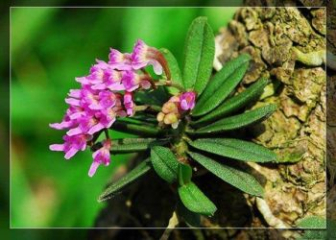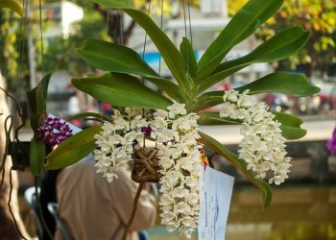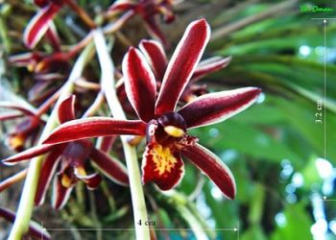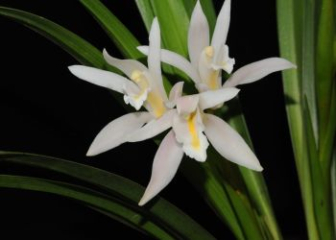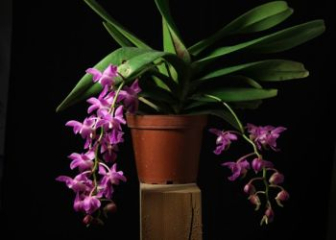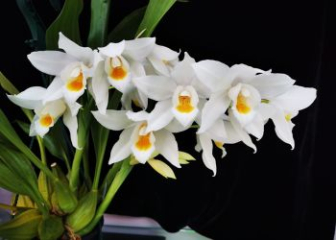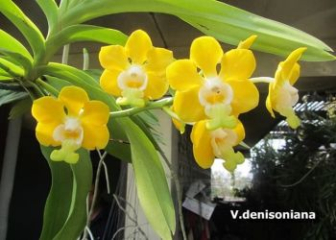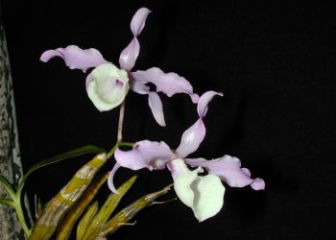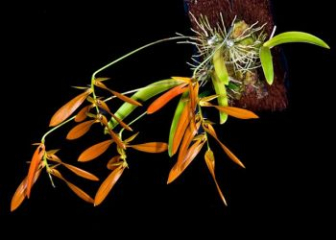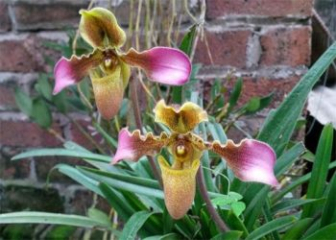Pink orchid - Growing & care techniques from A to Z
Blog | by
Dendrobium draconis is a species of orchid belonging to the genus Dendrobium, with straight stems, pure white flowers, pink-red throats, and a citrus scent.
The Pink orchid , also known as the pink-pointed Dendrobium (scientific name: Dendrobium draconis), is a straight-stemmed orchid with a pure, pristine beauty with pure white flowers, accented with a prominent pink-red throat.
With its delicate beauty, light, refreshing fragrance and ability to bloom during Tet, the pink orchid has conquered many orchid enthusiasts.
So what is special about the Nhat diem hong orchid, is the planting and care technique simple? How to stimulate the flowers to bloom in season?.... Let the wild orchid answer you in detail through the article below!
Introduction to the orchid Nhat diem hong
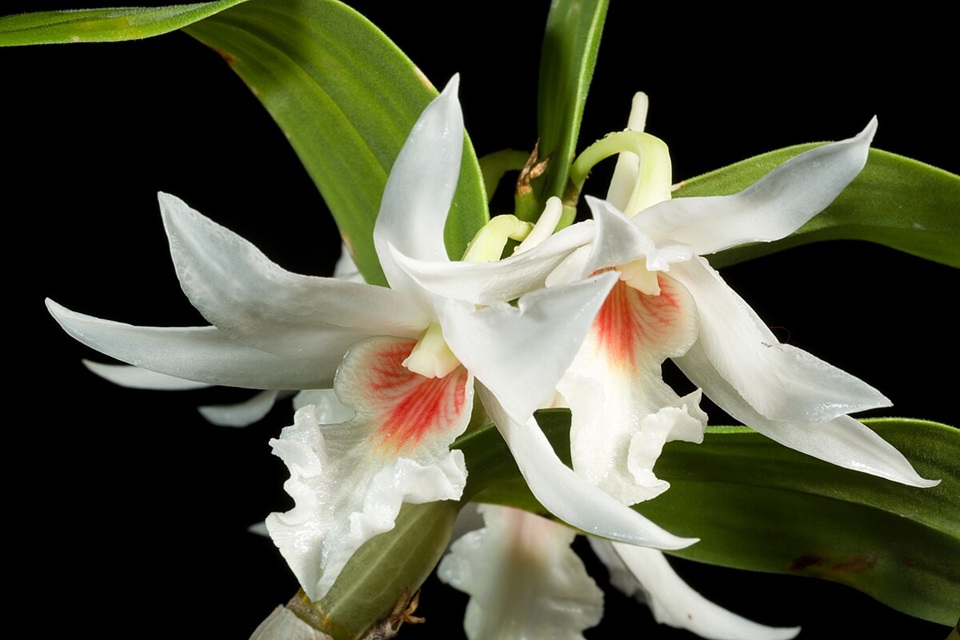
The orchids are pink with pure beauty.
The full name of the orchid is “Hoang thao nhat diem hong”, a species of wild orchid belonging to the genus Dendrobium, scientific name is Dendrobium draconis. They originate from Southeast Asia and South Asia, and are popular in the following countries:
- Vietnam: Northern and Central mountainous regions such as Lam Dong, Gia Lai, Dak Lak, Kon Tum,...
- Myanmar, Thailand, Laos
- India
- China
In nature, the pink orchid is often epiphytic, growing on large tree trunks in humid forests at an altitude of 500 - 1500m above sea level.
The name "nhat diem hong" comes from the fact that the flower throat is pinkish red, orange-red with clear stripes standing out on a pure white background.
How to identify pink orchid
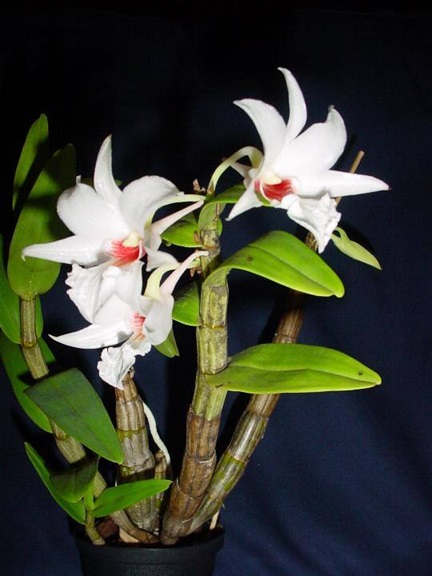
Image of stem, leaves and flowers of the orchid Nhat diem hong.
Right below is a detailed description of the morphology and flowers of the pink orchid. Let's learn more to know how to distinguish this orchid species from other orchids in the Dendrobium genus.
Close :
- Pseudobulb, round cylindrical, not bulging, plump
- Grows upright, about 20 - 40 cm high
- Light green or yellow green, with vertical stripes on both sides of the body, slightly black hair, each body has about 7 - 9 segments.
Leaves :
- Grow alternately on both sides of the body
- Oval leaves, about 4 - 6 cm long, 1.5 - 3 cm wide, leaf sheaths hug the base
- Leaves are thick, sturdy, and have a slightly glossy green color.
- The stem does not shed leaves every year like other orchid lines.
Flower :
- Grows in clusters at the top of the pseudobulb, each cluster has 2 - 5 flowers, short stalks.
- Flowers are 5 - 6 cm in diameter.
- The white petals look like they are covered with a thin layer of wax, gently curved backwards, looking very soft and graceful.
- The flower lips (flower tongue) are also white, but the inside of the throat is red, orange-red or pink-red, which looks very prominent - this is also the reason why this orchid is called "one-point pink".
- The flowers have a scent like oranges and grapefruits, and their scent is strongest in the early morning.
- Flowers usually bloom in late winter - early spring (January - March of the solar calendar)
Distinguishing between pink orchid and white orchid
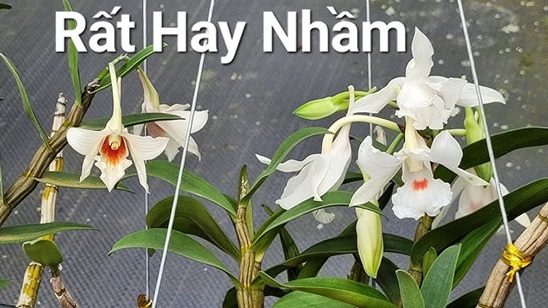
Pink orchid and white orchid.
Nowadays, many people mistakenly think that the pink orchid and the white orchid are the same because both belong to the Dendrobium genus, both are upright and have pure white flowers. However, in fact, these are two completely different flowers. Let's find out the details through the comparison table below to easily distinguish between these two orchid species.
|
Comparative characteristics |
Orchid with one pink dot |
Virgin orchid |
|
Scientific name |
Dendrobium draconis |
Dendrobium formosum |
|
Body - pseudobulb |
Grows straight, 20 - 40 cm high |
Body is fatter, taller from 50 - 70 cm |
|
Leaf |
Small, elongated leaves grow alternately along the stem. |
Large, thick leaves grow evenly along the stem |
|
Flower |
Grows in clusters at the top of pseudobulbs |
Grows in leaf axils near the top |
|
Flower color |
White with pink spots in the throat |
Pure white, with only a few faint stripes on the lip of the flower. |
|
Scent |
Light, sweet |
Strong, bold, seductive fragrance |
|
Flowering time |
January - March |
April - June |
Techniques for growing and caring for pink orchids from A to Z
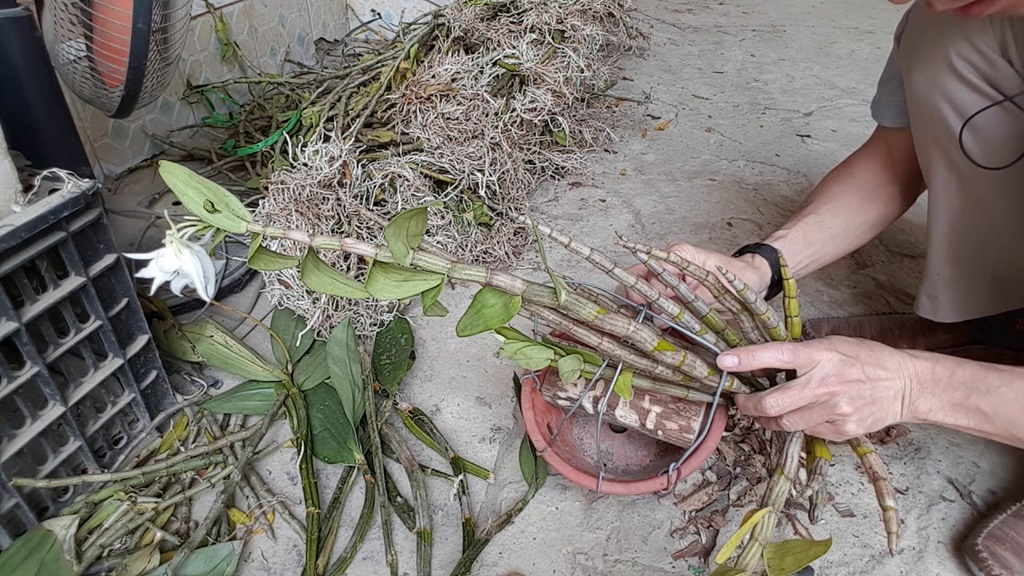
Instructions for growing pink orchid.
If you are new to growing pink orchids and do not have much experience, do not miss the techniques for growing and caring for this orchid species that we share in detail here so that you can easily conquer this beautiful and pure orchid species.
Preparation before planting pink orchid
The first step before planting the pink orchid is to select the breed, choose the substrate and do preliminary treatment to help the seedlings grow well and reduce the incidence of pests and diseases.
Choose the most pink orchid variety :
- Prioritize choosing healthy plants with 2-3 pseudobulbs.
- Choose sturdy tree trunks, not crushed, not waterlogged, and showing no signs of pests or diseases.
- You should choose purebred varieties because they are easier to care for and less susceptible to disease than varieties harvested directly from the forest.
Seed treatment :
- Cut off damaged roots, yellow leaves, dry stems, apply antiseptic or healing glue
- Soak seedlings in lime water solution or Physan 20 (1ml/1 liter) for about 20 minutes to disinfect.
- Soak the base and roots of the tree in a diluted B1 + Atonik solution for about 20 - 30 minutes to stimulate root growth.
- Then hang the plant in a cool place for about 2 days to let it dry completely.
Select and process the substrate :
- Driftwood, wooden boards, coir boards: Soak in lime water or diluted salt water + Physan 20 for 1 - 2 days to kill fungus and disinfect.
- Terracotta pots, pine bark, coconut fiber, charcoal: Soak in water, wash thoroughly many times, dry thoroughly before planting or grafting orchids.
Techniques for growing/grafting pink orchid
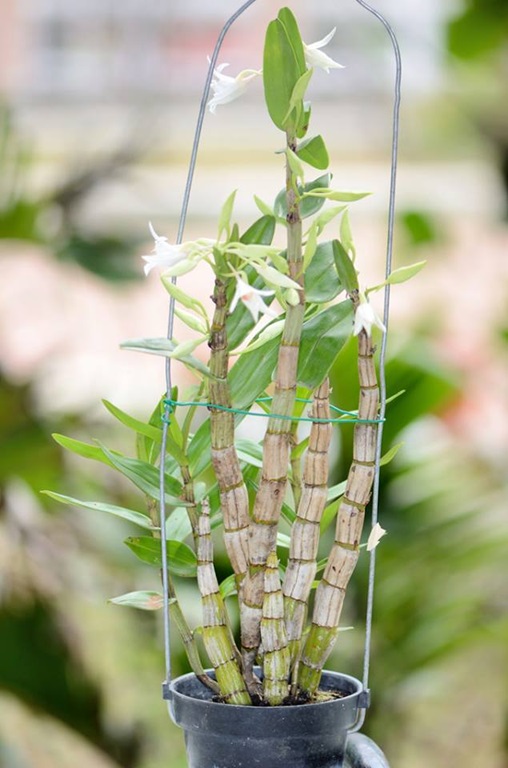
The pink orchid branches are fixed with wire and steel frame.
The pink Dendrobium is a species that likes airiness and dryness but still needs humidity, so you can choose to grow it in a pot or graft it onto a substrate. Each method has its own advantages, disadvantages and different growing techniques. For details, please refer to the following.
Planting pink orchid in pot :
- Advantages: Keeps warm, easy to care for, easy to move.
- Line the bottom of the pot with rocks and charcoal, mix the growing medium in the ratio of 60% pine bark + 20% charcoal + 20% coconut fiber.
- Place the orchid root in the middle of the pot, use wire and U-pin to fix the root.
- Cover with a thin layer of growing medium around the base, do not cover too deeply or the roots will become suffocated.
- For the first week, just spray lightly. After 1 week, when you see young roots sprouting, water and care as usual.
Grafting pink orchid onto wood or cork board :
- Advantages: Breathable, good drainage, beautiful shape
- Disadvantages: Poor moisture retention, must be watered regularly
- Orchid grafting: Place the orchid root close to the growing medium, vertically or slightly tilted, use a wire to lightly fix the root to the growing medium, add a little moss or coconut fiber under the root to keep it moist.
- Post-grafting care: Hang the plant in a cool, diffused light place. After 1 week when the plant has taken root, increase the light.
Caring for pink orchids in each stage
At each stage of development, the pink orchid will need a different care regimen to help the plant grow best and bloom on time. Please refer to the instructions below.
Light mode :
- Nhat dot hong is an orchid that likes 50 - 60% diffused light.
- Do not place in direct sunlight or shade.
- If grown in a greenhouse, just use 1 layer of black net.
Watering properly :
- New planting stage (first 2 weeks) : Only spray light mist, do not water the base to avoid waterlogging the base and roots.
- Growth stage : In the dry season, water once a day in the early morning. In the rainy season, reduce watering frequency and only water when the growing medium is dry.
- Note : If grafted on wood, driftwood, or coconut fiber, watering is needed more often because of poor moisture retention.
Fertilize in stages :
- Development stage (after rooting) : NPK 30-10-10 + B1 fertilizer every 10 days, diluted dose ½.
- Flowering preparation stage (November - December) : NPK 6-30-30, reduce watering, create dryness for bud differentiation
- Flowering stage : Spray Atonik, B1, organic fertilizer to help the plant recover.
Prevention and treatment :
|
Disease name |
Reason |
How to handle |
|
Root rot, plant rot |
Long-term waterlogging, caused by Phytophthora fungus |
Cut off the rotten, mushy parts. Use Physan 20, Ridomil Gold for timely treatment. |
|
Leaf spot, leaf burn |
Lack of water, harsh sunlight, fungus |
Move orchid to shade, spray with Topsin or Score |
|
Aphids, thrips, slugs |
Due to prolonged humid environment |
Confidor, Regent Spray Use your hands to catch and remove bed bugs and slugs if you see them. Disinfect the planting area with lime |
Secret to make Nhat Diem Hong orchid bloom during Tet
Super beautiful pink orchid cluster.
If you want the Nhat Diem Hong orchid to bloom in time for Tet, in addition to following the natural growth cycle, you need to combine it with "dry dormancy" and flower bud differentiation, specifically as follows:
Prepare the plant before stimulating flowering :
- Time: September - October
- Condition: The tree is domesticated, mature, and has stopped growing new leaves.
- Fertilization: Fertilize with NPK 20-20-20 + B1 + Atonik once a week to help the plant store energy in preparation for the flower bud differentiation stage.
Dormant stage - flower bud flowering :
- Time November - December
- Stop watering for the first 10 days, then only spray lightly every 2-3 days to keep moist.
- Do not fertilize during this period.
- Increase lighting, place the plant in a place with light sunlight from 7 to 10 hours then move to shade.
- Create a temperature difference between day and night of about 5 - 8 degrees to stimulate flower buds.
Care mode :
- Time: Late December, early January
- Signs of wax orchid flowering: The tip of the pseudobulb is swollen and pointed, the flower eye separates from the silk sheath, and the stem swells, which is a sign that the flower spike has emerged.
- Mist daily, maintain light from 50 - 70%
Adjust the blooming time :
- Flowers show signs of blooming early: Put the pot of pink orchid in a shady place, reduce light to slow down the bud blooming process.
- Flowers bloom slower: Increase light, spray more NPK 6-30-30 to speed up the bud blooming process.
Price of Dendrobium orchid with one point of pink
Currently, the pink orchid is sold very popularly in Vietnam at a fairly low price. For details, please refer to the following.
- Orchid with beautiful pink buds (Face book): 170,000 VND/kg, orders from half a kg, not including shipping fee.
- Wild orchid with one point pink color, beautiful big flower pot (Lazada): 200,000 - 250,000 VND/pot
- Standard pink orchid F1 (Lazada): 99,457 - 163,000 VND/pot
Note :
- If you have no experience, you should choose a purebred variety with a beautiful pot shape so that you can display it in time for Tet and it is easy to care for.
- If you have experience grafting and growing orchids, you can choose to buy wild products in bundles to save costs.
- When buying, you should ask clearly about the origin to determine whether it is a line exploited from the forest or bred,...
Pink orchid image
We invite you to admire the entire collection of super beautiful pink orchid images that we have shared below to fully feel the elegant, pure beauty of this special wild orchid species.
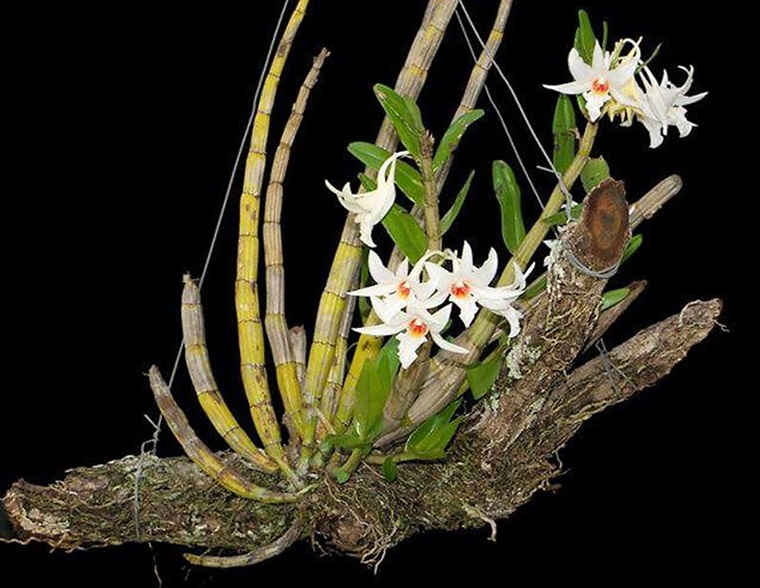
The pink orchid bush is grafted onto wood very beautifully and naturally.
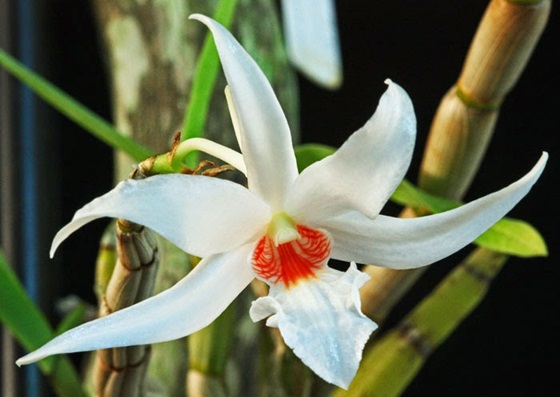
Close-up of the orchid face with pink dots and pure white color.

The pure, impressive beauty of the pink orchid.
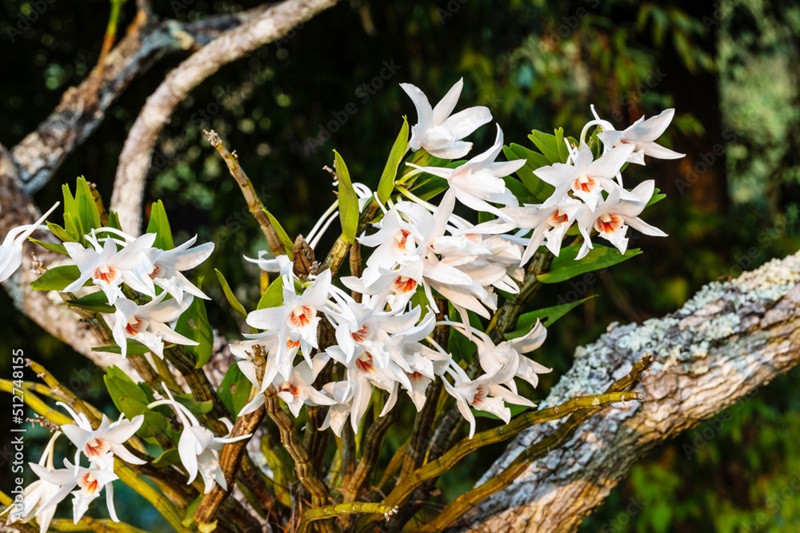
A giant pink orchid is blooming.
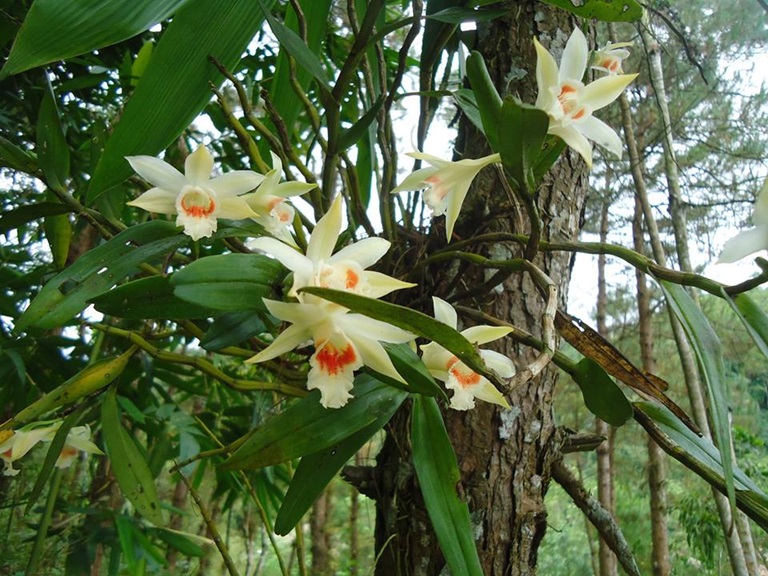
A single pink orchid growing in the wild.
With a slender appearance and pure white color, dotted with red-pink spots at the throat of the flower, the pink-red orchid has successfully conquered the hearts of many orchid growers in Vietnam. Hopefully, through the article that orchid-vn.com shares above, it will help you understand and know how to grow and care for this orchid species with the right techniques to be able to obtain the most satisfactory results.
If you want to learn more about the colorful world of orchids, visit our Blog section now!
